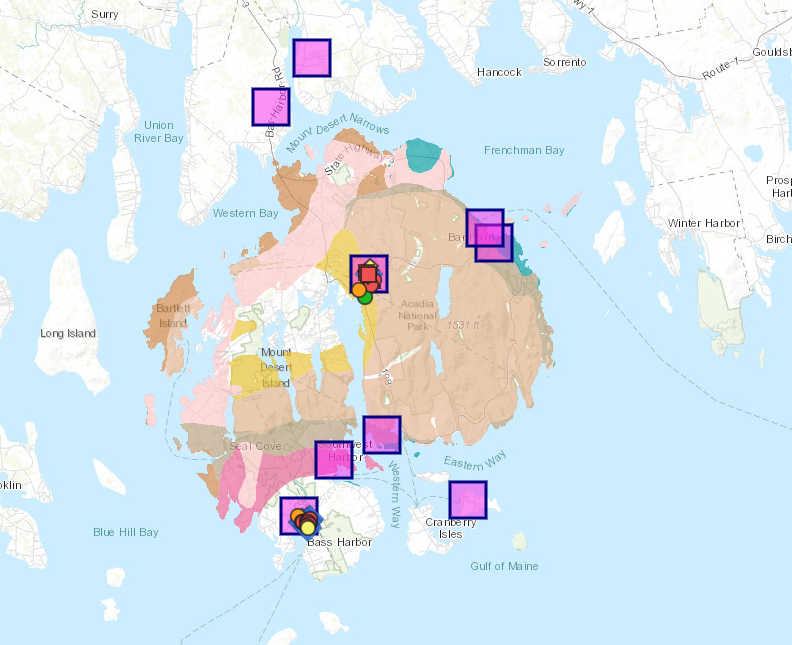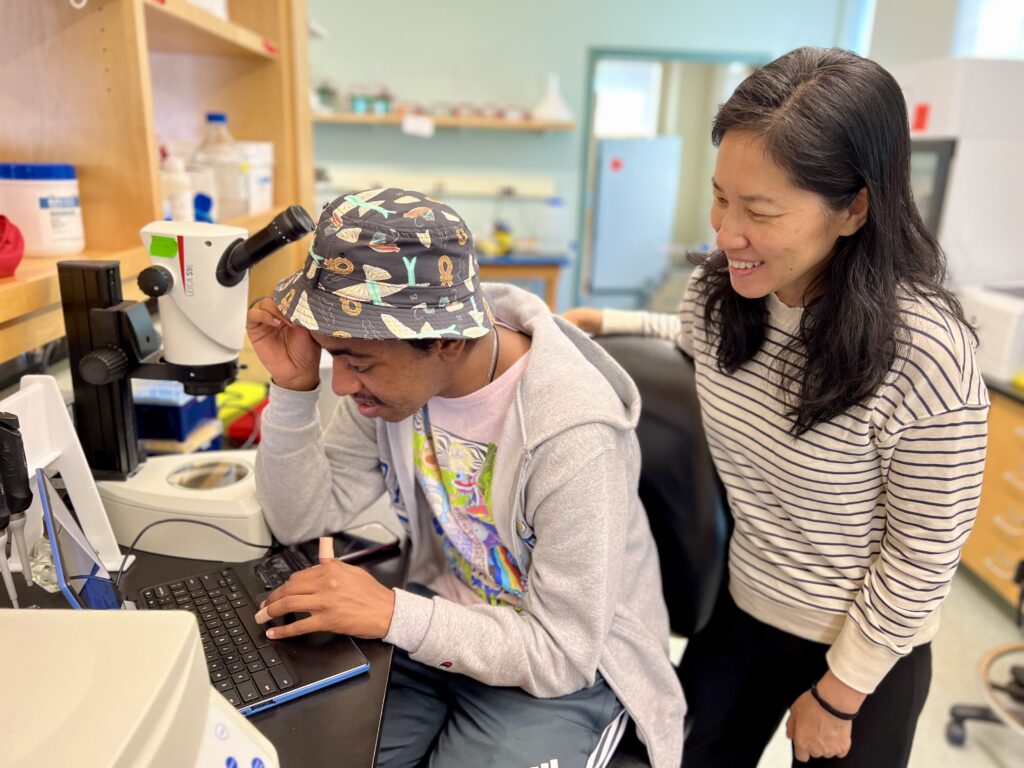
Studying Arsenic and PFAS Risks for Aging Mainers
Jane Disney, Ph.D. points at a water flea (Daphnia) magnified under a microscope. Water fleas are commonly used in freshwater toxicology studies.
Register for our free online Science Café on PFAS and other water-borne risks here.
Scientists at MDI Bio Lab are on a journey to learn more about contaminants in our well water, and to educate Mainers about how water-borne toxins may accelerate diseases associated with aging.
They are working with hundreds of citizen scientists to test residential wells for toxins such as arsenic, cadmium and lead. And they are beginning to study the presence of PFAS “forever chemicals” as well.
MDI Bio Lab’s team helps residents learn how to respond when contamination is detected, and participants in turn can take confidential health surveys to inform the effort to understand and combat today’s toxic challenges.
“Arsenic and other contaminants like PFAS are proving to be prevalent in Maine’s environment,” says Jane Disney, Ph.D. “We want to learn more about what their effects may be: when people get water testing done we can link those results with information from their drinking water and health surveys.”

For four years, Disney has been growing the Bio Lab’s “All About Arsenic” initiatives, working with allies such as AARP Maine and the University of New England to expand the efforts’ public reach and scientific scope.
Back in the laboratories of our Mount Desert Island campus, scientists are designing experiments to explore such contaminants’ biological effects on aging, down to the cellular level.

Molecular biologist Juyoung Shim, Ph.D., and Michael Abebe, a student at Georgia’s Albany State University, researched toxins with C. elegans roundworms at MDI Bio Lab this summer.
This summer a molecular biologist and Visiting Scientist from the University of Maine in Augusta, Dr. Juyoung Shim, Ph.D., created new ways to test the effects of residential well-water samples in tiny, transparent C. elegans roundworms, whose genetics are surprisingly like our own.
“There are a lot of similarities between how C. elegans worms age and how mammals age,” Shim says. “Cognitive decline or changes in mobility, the loss of muscle mass… we hope to get at some answers in an animal model that are hard to get at in the human model, to better understand how contaminants can affect the hallmarks of aging at the individual level.”